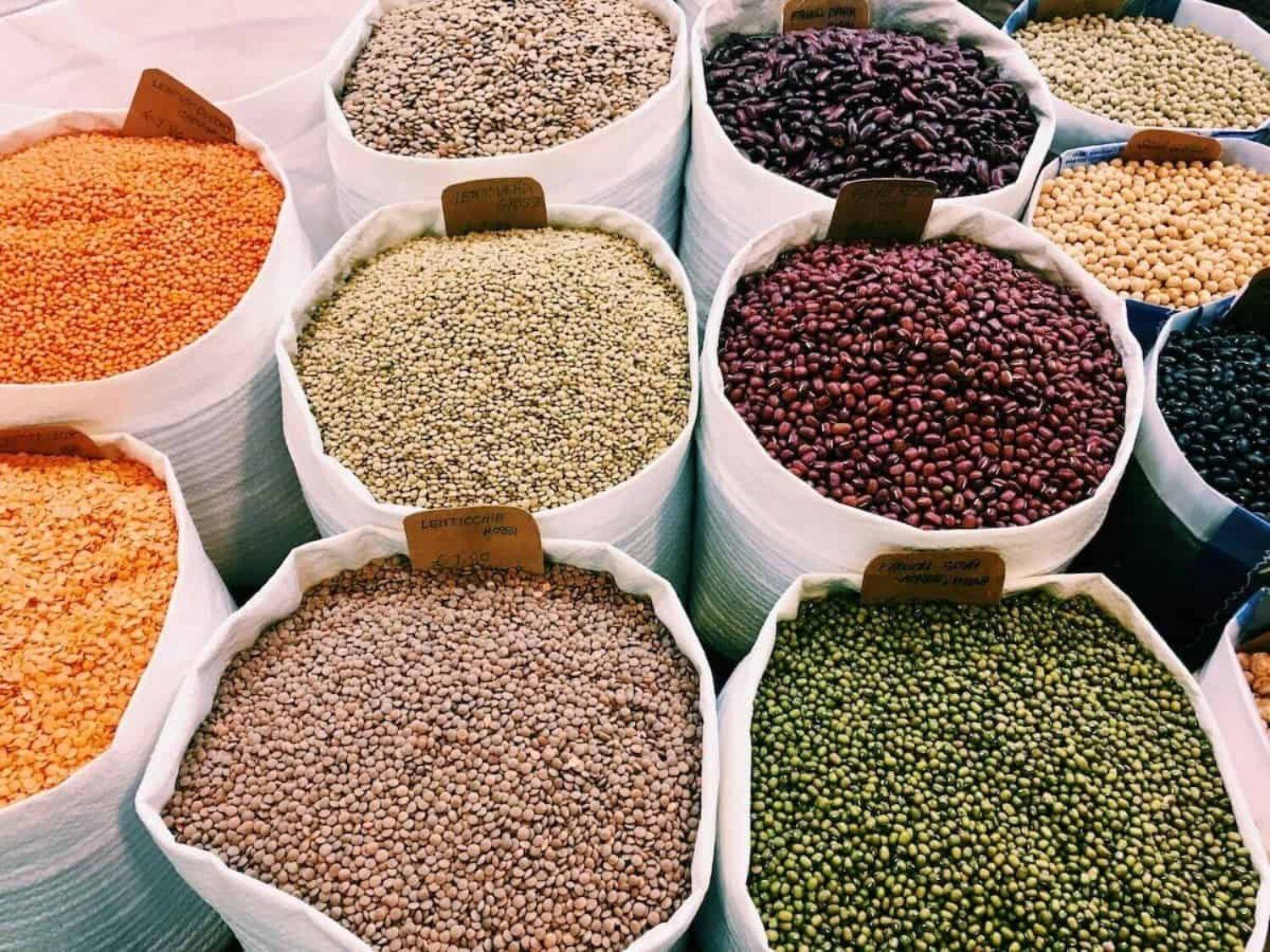Ahead of World Pulses Day, we delve into the details of three versatile varieties. Guided by the chef Ali Honour, here are some dishes that transform ‘magic’ beans into delicious dinners
What can you cook with beans? For Ali Honour, who has three decades’ experience as a chef, it’s the wrong question. “What cant you do with beans? I haven’t found the answer to that yet,” she says. “And I hope I never do. I hope I die asking that same question, while I’m eating my beans.”
For Honour, getting involved with the campaign Beans is How – which aims to double global consumption of beans, as well as other pulses and legumes, by 2028 – was a no-brainer. She has been keen on all of the above since she could first remember as her grandparents and parents harvested peas, runner beans and broad beans from their back gardens. “They’re easy to grow,” notes Honour, “and we ate lots of them growing up because there were a lot of mouths to feed and they’re such a good bulking ingredient.”
Pulses and legumes are a “win for people and for planet”, she says. “They’re an amazing plant protein: they’re so cheap, rich in fibre, and extremely nourishing. Compared to other crops, they require less water to grow, and they’re so good for the soil because they fix nitrogen, reducing the need for synthetic fertilisers.”

All hail the Bean Queen! Chef Ali Honour is on a mission to get us eating pulses. Image: Joleen Cronin
Having worked in kitchens since she was 13, Honour now uses her culinary expertise to win over even the biggest bean-sceptics. When we speak, she’s preparing for a ‘beans takeover’ at Google’s London headquarters for World Pulses Day – which this year lands on 10 February – cooking for 3,500-odd employees. In a couple of weeks’ time, she hopes to set pulses racing with a fine dining dinner for around 20 people at Fortnum and Mason in the capital. Her would-be converts are audiences large and small, in size and in age: she recently led a workshop at her daughter’s school, reading Jack and the Beanstalk to a class of four-year-olds, who nibbled on mangetout and sugar-snap peas.
When asked to pick her favourite pulses, Honour baulks like someone who’s been asked to choose a favourite child. “I love them all dearly,” she says. But she is willing to spill the beans on three of her go-to choices…
1. Lentils
For Honour, lentils are a perennial comfort food. “One of my favourite meals when I’m feeling down, or things aren’t quite right, is dhal, because it feels like a big hug in a bowl,” she says. “I just love making a really spicy dhal base with red lentils, adding some coconut, and whatever veg I have in the fridge, or that’s in season.”
Green and brown lentils come in handy if she’s making a cassoulet, or mushroom rissoles. “Lentils are so versatile, and like beans they’re rich in polyphenols, which have antioxidant and anti-inflammatory properties,” Honour explains. Lentils are also easy and relatively quick to cook from scratch – all you need to do is give them a good rinse, bring them to the boil and then reduce to a simmer for 20-25 minutes, or until they’re tender.

Lentils, like beans, are rich in polyphenols, which have antioxidant and anti-inflammatory properties. Image: Betty Subrizi
2. Butterbeans
“Butterbeans are basically meaty nuggets of gorgeousness,” Honour says, and they’re ideal for introducing ardent carnivores to the delights of pulses and legumes. “I always find that meat lovers will be happy if you give them butterbeans because they’re so meaty in texture; they have that lovely creaminess to them. The giant ones pack a punch in texture, and they’re very high in potassium.”
One of her favourite dishes is giant butterbeans cooked in a “really unctuous, reduced red wine tomato sauce, with loads of parmesan, feta or a vegan equivalent, and really good bread, toasted, with some oil over it.”
Dunking in the bread and scooping up the sauce makes for a deliciously comforting meal, Honour adds, and it’s an easy introduction for those who might not yet have their finger on the pulse, so to speak.
Growing beans is much less intensive than animal agriculture, which accounts for more greenhouse gas emissions than all transportation combined, according to the UN’s Food and Agriculture Organization. “If meat-eaters can reduce their meat intake and incorporate beans into their diet, they’re doing the world a huge favour,” Honour adds.
3. Borlotti beans
Honour likes to combine these speckled beauties with roasted vegetables – “pumpkin or squash and roasted cauliflower, really roasted with loads of charred flavour” – and then drizzle a fresh green-herb dressing on top. You can either use tinned borlotti beans for a quick weekday supper, or soak the dried ones overnight. To speed up soaking time, add a little sodium bicarbonate or kombu seaweed to the water.
Honour also suggests blitzing borlotti beans and baking them in protein-packed brownies or a chocolate fudge cake (kidney beans and black beans work well for this too, she notes).
Pulses and legumes are an amazing plant protein: they’re cheap, rich in fibre, and extremely nourishing
Savoury or sweet, beans are such a versatile ingredient, Honour says, that she eats them every day. For too long, they’ve suffered from an unglamorous reputation in the UK, with many of us limiting ourselves only to baked beans on toast, but she’s determined for that to change. For her, they’re a blank canvas for experimentation – she even makes cheesecakes and Baked Alaska with beans – and they’re also perfect when you’re in a rush. “You can have dinner ready in 10 minutes with a tin of beans.”
These days, she only occasionally encounters people who insist that they dislike beans, she says. “But once they have a bean brownie in their mouth, you don’t hear any complaints.”
Find out more about The European Food Information Council’s work around World Pulses Day here

